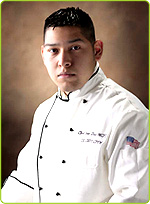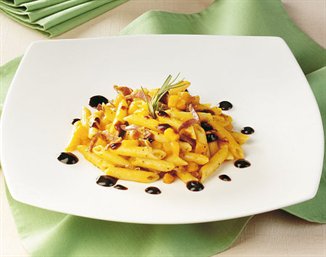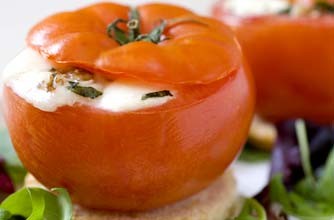We’re off to the 2009 Food and Wine Classic in Aspen for three days of delicious bliss! Stayed tuned for tasty updates as Savory Tv joins Average Betty and Plum Tv for coverage of the event! In addition to our team, we are also looking forward to meeting Jen from Daily Blender, Chef John from Food Wishes, and Danny from Foodie Aspen. Cheers and safe travels fellow foodies and epicures! À bientôt!
food
The current dismal state of the economy is horribly depressing, stagnant, and no one has any clue when things will turn around. Our wallets are thin, and the grocery store checkout lane almost bring tears to our eyes. Who better to turn to than professional chefs for money saving cooking and shopping tips? We put a shout out on Twitter, several chef forums, as well as scoured the recent news, and here are our results!
 Break it down yourself. Our local Telluride friend Chef Bud Thomas hosts a live internet cooking show and and has a blog with gorgeously simple recipes. Bud recommends buying an entire bird, not only can you save over $13, but you can use the bones for stock.
Break it down yourself. Our local Telluride friend Chef Bud Thomas hosts a live internet cooking show and and has a blog with gorgeously simple recipes. Bud recommends buying an entire bird, not only can you save over $13, but you can use the bones for stock.
Here is his chicken price breakdown, whole versus pieces: “:Whole $7.72. Pieces: two breasts $11.31, two thighs $2.47, two drumsticks $3.44, two wings $4.72. Total cost whole bird = $7.72 Total cost pieces = $20.79. Price difference = $13.07” Eye opening isn’t it?
Sacramento personal Chef Jeff McDonald shares his grocery shopping essentials here, and we love his tip for block cheese: “Shred cheese yourself to save money. Pre shredded cheeses are convenient, but if you’re willing to shred as you go, you’ll get twice the cheese for your money.” We all know this but do we really practice it? Next time you’re about to grab the bag of cheese, stop! Not only will your wallet thank you but your taste buds will as well.
Use every part of the animal possible, a tip Julia Child would surely endorse! Hector Santiago is the chef and owner of the Atlanta tapas restaurant Pura Vida. He tells the Restaurant Informer his means of coping. “The way I work is, I cut my costs by making sure I am using everything, every possible part of my ingredients. I get, say, a whole trout; I don’t throw anything away but the guts. If it comes with roe, we use the roe for caviar. The bones we make into stock. We get the most out of the product by making sure nothing goes to waste.”
Grow your own. Season 4 Top chef Mark Simmons from Get Fresh in Brooklyn grows a small garden in his restaurant patio. He offers organic gardening tips here, and recommends stretching your dollar by growing swiss chard, spinach, and kale, as they produce leaves for the entire growing season. Tomatoes and peppers are also recommended, as the canned sauces can be used year round.
 Fish Tips: Our friend, Chef and author Ben Diaz (featured left) sent us the following tip: “When buying fish always try to buy it whole. It’s a little more work but your fish will stay fresher for up to 3 more days. Always check availability, buying fish when they are in season is a great way to save money and ensuring that you get the highest quality possible.” Thank you Ben!
Fish Tips: Our friend, Chef and author Ben Diaz (featured left) sent us the following tip: “When buying fish always try to buy it whole. It’s a little more work but your fish will stay fresher for up to 3 more days. Always check availability, buying fish when they are in season is a great way to save money and ensuring that you get the highest quality possible.” Thank you Ben!
In an interview with NPR, Naked Chef Jamie Oliver says that “Seafood can be expensive. There’s people’s time and labor and petrol costs to get the boats out there. Talk to your fishmonger (or local fish market) and tell him you’re on a budget and set him the task of sorting you out. Fishmongers and butchers have had a lot of business taken away from them by supermarkets. If you just talk to your butcher or fishmonger and say, I’ve only got three dollars, I’ve got two kids, what can I do? I think you’d genuinely be surprised with what you come back with.”
Shop around. Stores such as Whole Foods are so fun to shop in but can really siphon your dollars if you aren’t careful. The Washington Post reports that DC area restaurant chefs have been saving money shopping in Asian superstores such as H Mart, for their affordable and exotic ingredients including noodles, fresh seafood, and produce. If you are lucky enough to have such ethnic markets in your area, go exploring!
Shop local. North Carolina chef Amy Tornquist of Watts Grocery restaurant saves money while remaining committed to regional sustainable food. She tells Southern Living magazine “if it’s a decision between buying organic at the grocery store or fresh from your local farmers’ market, always go with local first,” and believes that small farmers primarily use organic growing methods, but may not have the size or money to be certified as organic. Her farmers market tips include: getting there early for the best selection, and to build relationships with the farmers, not only to learn more about them, but they can often give you recipe ideas and tips on how to best use their produce.
Make a list. Oprah recently had a show where celebrity chefs moved into viewers homes to help them save money. Cat Cora‘s tip is so basic but essential, always have a plan and bring a shopping list to the store, “the statistic is literally that people spend 50 percent more than they need to if they don’t have a list”. Guilty, guilty we are with this one, thinking, “the list is in my head!”. Our new mission is to never leave home without one.
Make your own. Chef Curtis Stone was also on the show and was a fan of making your own snacks. He suggests buying tortillas in packs (flour or corn) and making homemade chips as cheaper, healthier alternative to bagged chips.
 Make homemade spices! Our friend Chef Ray Duey (the chef shown on the right) from Chef Garnish sent us a great tip via email. “When I juice vegetables I save the extracted pulp and dehydrate it. I then grind it and add a little sea salt and fresh ground pepper and viola, homemade, non wasted, fresh made Mrs. Dash seasoning !!” We love this one!
Make homemade spices! Our friend Chef Ray Duey (the chef shown on the right) from Chef Garnish sent us a great tip via email. “When I juice vegetables I save the extracted pulp and dehydrate it. I then grind it and add a little sea salt and fresh ground pepper and viola, homemade, non wasted, fresh made Mrs. Dash seasoning !!” We love this one!
Stop wasting. Award winning NYC Personal Chef Mark Tafoya is one of our first chef friends we met on Twitter. Our favorite tip of his includes not wasting your broccoli stalks, remove the rough outside with a vegetable peeler and use the rest! You can listen to it here. He also has a free podcast packed with delicious recipes and tips.
Save with slow food. Chef Ming Tsai is a fan of crockpot cooking to balance your budget, and shares his favorite slow cooker recipes with the ABC show The View, including a delicious Asian Beef Stroganoff .
So there you have it! Perhaps basic, common sense tips really, but a nice reminder and reality check for us all. Do you have any favorite tips money saving tips to share? Do tell in the comments please!
Pebble Beach Food and Wine is quite possibly THE epicurean event of the year, and we’re not there! And most likely neither are you if you are reading this. Sigh. So, for those lacking the time, resources, or ability to attend these 4 days of delicious celebrating with over 250 wineries and 60 celebrity chefs, we’re providing an opportunity to live vicariously through video!
Among the chefs participating: Our beloved Eric Ripert, Thomas Keller, Tom Colicchio, Rick Tramonto, Masaharu Morimoto, David Myers, Cat Cora, Daniel Humm, David Kinch, and our culinary hero, Jacques Pépin!
A note on the first featured clip: this video was played in the motorcade en route to the Founders’ Dinner, and displays an assortment of attendees and the wines that they brought to the event.
The second video includes snippets of the festival from Chef John Mitzewich from Food Wishes. It’s great to see how a chef views the festival as an attendee, and he is amusing as always!
Today I am taking a video break to share some Twitter love! Heidi from Savory Tv is SavoryTv on Twitter. Through Twitter, we’ve entertained ourselves endlessly, kept up on Lance Armstrong’s races, met both professional and home food lovers, authors, world travelers, chefs, food producers and more. We’ve tweeted with Bravo’s Top Chef employees during the show. We’ve been snail mailed gourmet orange juice samples from Italy. We’ve been sent toddler food containers and fresh walnuts from the backyard of a deliciously talented cookbook author. We’ve discovered an entire new world of wine and food bloggers and culinary epicures, almost to an overwhelming extent. And recently, we’ve had the pleasure of meeting talented chef guest posters, which has been a wonderful experience. Twitter is truly the only way to keep up on media, news, and trends buy having your finger on the pulse of what’s happening now.
Have a question, ask you Twitter peeps! Curious if a movie is worthwhile, looking for an Iphone app for ebooks, or wondering why your photo of pear compote is looking to dark on the edges? Throw your question into the Twitterverse and you will almost always get helpful responses.
There are several restaurants using Twitter effectively, and while some are not exactly brewing with engagement, they will often post their nightly specials, special events, and occasional Twitter discounts. Food brands and stores such as Whole Foods will often answer your questions regarding products. Airline companies offer amazing flight specials at times and are often worth a follow.
Our simple Twitter rules? Don’t spam, be helpful, share, engage. Don’t go crazy with retweets, but RT messages occasionally that others will find interesting or helpful. Choose a nice well rounded circle of people to interact with.
Is Twitter essential for the growth of a successful business? No. Are you missing out on endless opportunities if you do not partake? Absolutely.
Cheers and happy tweeting!
Chefs, authors, musicians, actors, poets, so many of us have very strong feelings about food. Why is food so emotional? Scents of food stir up childhood memories, cooking for and feeding someone is one of the sweetest gestures in the world, even watching someone eat can be a delight. Food and love are undeniably connected.
We’ve been collecting some of our favorite food quotes for quite some time, and have neatly bundled them here. Enjoy!
Food trends can be fickle and short lived, and what was trendy, hip, and smoking hot yesterday can be as washed up and stale as cold leftovers today. So, what’s currently hot in the culinary world?
Every year in October, the National Restaurant Association surveys professional chefs to find out their culinary forecast for the upcoming year. This year, over 1600 chefs responded, rating over 200 foods as a “hot trend”, “yesterday’s news” or a “perennial favorite.” We found a great video summarizing the results and you may read or download the full pdf report here. What made the list? Healthy, nutritious, fresh locally grown foods, superfruits and exotic fruits, artisan cheeses, free range meats, sustainable seafood, organic wine, smaller portions and mini foods such as tapas and dim sum. Overall a refreshing focus in general and very healthy trends, let’s see if they prove to be true in the months to come!
We also found this list from top experts in the hotel and restaurant industries, with current hot food ingredients including:
– Ricotta cheese and comfort foods
– Asian noodles in broth
– Flat iron and flank steak (due to it’s affordable cost)
– Ethnic flavorings for poultry
– Breakfast foods any time of the day ( we love this one!)
– And the trendy spice for 2009 = Tarragon.
Food and travel writer Lisa Rogak authored this article with chef insights on food trends, and her list reinforces the local food, smaller portions, and affordable meat trends, in addition to tea infused foods, and savory cocktails such as Chili Serrano Martinis ( hangover anyone? ).
Other hot alcoholic beverage trends according to Epicurious include Ginger cocktails and Ginger beers. Says editor in chief Tanya Steel, ““One of the areas people are not cutting back on is liquor, people are drinking more.”
What do the Brits think of the issue? Well for one, that foodies rule, as we already are aware! Check out their predictions from the Guardian for the new year here, or watch a great video from The Food People here.
What trendy foods for 2009 does Bon Appetit see in their crystal ball? You can read the wrapup here, or the full report in the January issue, but a top trend is “Luxury for Less”, including affordable substitutions, such as eye of round for prime rib, and truffle oil instead of truffles. Peruvian food is climbing it’s way to the top of the ethnic ladder, and their top dessert ingredient of the year is peanut butter.
We’d love to know your thoughts, or if you have any predictions of your own, let us know in the comments!
(Note: Also see our newer post with additional updated food trends.)
A 9 hour drive in the Colorado mountains is a humbling experience. On the way home, driving through intermittent snowstorms, icy roads, and several “almost” accidents, thanks were given, once again. Thankful that the little Mazda in front of us swerved off to the right on the ice. Thankful that the rock split the windshield towards the bottom , not affecting visibility. Thankful for our sweet, silly, family. And thankful that, after all is said and done, the drive was worth it. Wandering off in thought from the sleepy ipod audiobook, our thoughts turned to warm comfort food, in particular, soup, served with an equally comforting piece of baguette. What do we still have at home? What could we create? The beauty of soup is that all that is required is a creative mind and a few ingredients, it’s like art in a pot!
Tonight we chose pea soup with our baguette, and to stir your creative visions we bring you this video from chef Jason Hill, serving up a piping hot classic split pea recipe. Ingredients include: 1 lb of dried split peas, half an onion, 2 carrots, 2 celery stalks, 2 cloves of garlic, bacon, a bay leaf, chicken stock or bullion mixed with water, and whatever your inventive mind desires to add. You could substitute ham for the bacon, or easily make the soup vegetarian by omitting the meat.
Holiday food and wine pairing, mystery solved!
Hosting a party or event during this busy holiday season? Seasoned chefs and sommeliers have no difficulty with food and wine pairing, but for many of us, the issue can be a perplexing challenge. We have discovered this sinfully easy cheat sheet to assist you, a simple interactive wine pairing wheel. Simply click the image, choose a wine, and receive suggestions for the appropriate meat or poultry, fish, sauces, and desserts. Thanksgiving party planners take note: this guide recommends Sauvignon Blanc as a suitable white wine for turkey, and Pinot Noir as a complimentary red wine. For smoked turkey, the guide suggests a white Riesling.
We brought up the subject of turkey to our friend Joe from Another Wine Blog, and he recommended a 2007 Cono Sur Pinot Noir, with an attractive price point of under $10. Wine.com provides a list of suggested wines for thanksgiving here, and you may also find helpful this Thanksgiving wine pairing article written by Joanie from Lafond Vineyards in Santa Barbara.
Central Italy: Le Marche, Lazio, Umbria, and Tuscany, 4 regions of delicious Italian food history. Here the summers are hot and long, and home to Italian delights such as the grain farro, the spice saffron, chestnuts, white beans, and truffles, and the world’s finest olive oils.
And here we find the origins, and fables, of Bruschetta.
The most common bruschetta legend is that olives harvested in November and December were taken to the local central Italian mill for pressing, the mill having a burning fireplace. The presenters to the mill brought local Italian bread, grilled it on the fireplace and rubbed it with garlic. The toasty bread served as a canvas to test, and to show off their prized oils.
Or a less romantic story is from “The Dictionary of Italian Food and Drink” by writer John Mariani, stating “”Bruschetta. Toasted bread, often rubbed with garlic and drizzled with olive oil. Also schiena d’asino, soma d’aj in the south, and fettunta in Tuscany. Bruschetta has always been a way to salvage bread that was going stale by adding oil and seasonings. Sometimes the bread is entirely immersed in oil, but usually the oil is poured on the top after the bread is rubbed with a garlic clove. In recent years adding toppings, particularly chopped onions and tomatoes, has become popular in restaurants.”
Rumors and legends aside, Bruschetta wins our heart. Tuscan Chef Gabriele Corcos with his beautiful wife Debi Mazar have won our heart as well, with their delicious video version of Bruschetta with a surprising twist!
Check out all of their delicious recipes and fall in love with them here, at Under The Tuscan Gun.
BRUSCHETTA WITH SAUSAGE, BRIE CHEESE AND FRESH HERBS
Gabriele Corcos – Under The Tuscan Gun
Serves: 6
Prep Time: 5
Cooking Time: 15 min. for the sausage sauce + 5 min. in the broiler
Ingredients
6 slices of bread
2 pork sausages (mild or hot according to taste)
¼ Lb of Brie Cheese (or other semi-soft cheese)
¼ Red Onion
1 Handful of Rosemary
1 Handful of Sage
½ Glass of White Wine
Olive Oil, Salt and Pepper
How to:
-getting ready-
Chop the Onion finely and rinse the herbs thoroughly. Chop the sage finely.
Slice the bread.
Pop the wine open and start sipping!
Cooking your dish
Open the Sausages and sauté the meat with the onion in a tablespoon of olive oil for about 5 minutes in a medium sized non stick pan, until the meat starts browning.
Add the half glass of wine, the rosemary and the sage.
Cook for about 5-7 minutes, until the wine has been completely absorbed, take off the fire and set aside.
Toast your bread on a fire grill, in a toaster or on the barbecue; do not use a sandwich press, otherwise you will make crackers.
Note: the correct pronunciation of bruschetta is “broo-sketta”. If the video was not clear enough, here is a sample sound clip from an Italian female that should help you say it the right way:
Autumn has arrived in full swing and we find ourselves betraying our favorite summer foods like a wicked adulteress. We’ve been ditching salads, ignoring the barbecue, and even walking away from one of our best friends, sushi. Instead, our fickle appetites have found a new love, warm and hearty comfort foods. This week our new love is soup, and today, we have a crush on French onion soup.
Made of beef broth, onions, croutons, and cheese, this ancient soup has enjoyed a rebirth beginning in the 1960’s when French food came into vogue in America (I believe we were late to the party!).
Where did it come from? Although onions have always been a staple among poverty stricken diners since ancient Roman times, ironically French onion soup was presumed to have been invented by French royalty, King Louis the XV. The story is that, in his hunting lodge, alone with only onions, butter, and champagne (poor thing), he created the world’s first French Onion Soup.
We love this version by Chef John in this video, and you may find his full written recipe here.
French Onion Soup from Foodwishes on Vimeo.
Do you have a favorite version of French onion soup? Do tell! Post your link or recipe in the comment section below!
Cheese ambrosia! Chef Jacques Pépin shares a favorite family appetizer
Author and Master Chef Jacques Pépin and his daughter Claudine show us their family French recipe of fromage fort, meaning “strong cheese” in English. This creative appetizer utilizes all of the random small pieces of cheese that you may have stashed in your fridge! Use camembert, swiss cheese, goat cheese, brie, or whatever you happen to have available. Combined with white wine, garlic, and pepper, the end result is a warm cheese blend that may be served on baguette toast or crackers for a heavenly appetizer or snack.
Watch the video for the details, and visit the Food and Wine Magazine site for more delicious recipes.
Fromage Fort
Chef Jacques Pepin
1/2 pound cheese pieces
1 garlic clove
1/4 cup dry white wine
Black pepper
Salt
Put 1/2 pound of cheese pieces in the bowl of a food processor, add 1 garlic clove, about 1/4 cup of dry white wine and a big grinding of black pepper. Salt is usually not needed, but taste the mixture and add some if it is. Process for about 30 seconds, until the mixture is creamy but not too soft, and then pack it into small containers. The fromage fort is now ready to use. You may serve it cold or spread on bread and broiled for a few minutes. Broiling will brown the cheese and make it wonderfully fragrant.
October is past the mid month point and you haven’t yet had your dose of pumpkin trivia! Let’s fix that!
Pumpkins are considered a superfood, meaning they have high levels of antioxidant flavonoids and micronutrients, most notably vitamins A, C, potassium, and fiber. Pumpkin seeds are a great source of Omega 3 fatty acids, which contribute to healthy brain function according to recent research from UCLA. Enjoy that fact while munching on your pepitas!
The amber pumpkin flowers are also an edible food, and considered a delicacy in many cultures. I found a few interesting pumpkin flower recipes! The first one is a Bengali dish, Kumro Phool Bhaja which translates to “Pumpkin Flower Fry”, you can see a recipe here. Sopa Mexicana De Flor De Calabaza is a traditional Mexican dish that translates to “pumpkin flower soup” and a recipe from Miguel Angel Castillo can be found here.
Pumpkin seed oil is a viscous, nutty, dark green nutrient packed oil made from roasted pumpkin seeds. It is traditionally used in the Styrian region of Austria as a salad dressing ingredient combined with apple cider vinegar.
Our pumpkin tribute today is concluded with a video by Chef Matteo Carboni from the Academia Barilla Culinary School in Italy, and he prepares penne with a pumpkin and bacon sauce, garnished with balsamic vinegar and parmesan cheese.
Penne pasta with pumpkin sauce
Chef Matteo Carboni
Serves 4
Ingredients
1 lb pumpkin
3 oz smoked pancetta (or bacon)
Parmigiano Reggiano cheese
parsley to taste
rosemary to taste
garlic
few drops of Academia Barilla Traditional Balsamic Vinegar of Modena, aged 12 years
½ onion
extra virgin olive oil
1 lb penne rigate
 Peel and remove the seeds from the pumpkin.
Peel and remove the seeds from the pumpkin.
Cut into cubes of about 0.5 inch each side.
Place the rest of the pumpkin, the onion, and a little salt in a pan and cover with water until it boils.
When the vegetable is cooked, whip until you obtain a cream.
First cut the smoked bacon into pieces of about 0.2 inch in length and then cut in Julienne style.
Mince the rosemary, garlic and parsley.
Put a pan on medium heat, add a drop of oil and fry the smoked bacon.
Remove the smoked bacon from the pan, add the pumpkin and cook, adding salt and pepper to taste.
Add garlic, rosemary and the bacon to the pumpkin and after 2 minutes of cooking, add the pumpkin cream. In plenty of salted boiling water cook the pasta, drain and add with the previously prepared sauce.
Add the Parmesan grated, plate the pasta and drizzle with Traditional Balsamic Vinegar of Modena before serving.
A frittata is an Italian omelet, which, unlike a traditional omelet, is is served open rather than folded, and is typically started on the stovetop and finished in the broiler. Filled with meats, cheese, or vegetables, frittatas are an excellent avenue for leftover food. In Naples, Italy, frittatas (not surprisingly) typically also contain pasta.
It is thought by devoted food historians that the frittata has origins predating the omelet, and may have gained popularity in Italy during the observation of Lent. Traditional Italian frittata fillings include fontina cheese, garlic, nutmeg, italian sausage or ham, and sweet peppers. The American frittata craze is noted to have began in 1952, when the New York Times published the first frittata English language recipe.
Frittata’s are perfect for using random leftovers when your food stock is slim, and make an excellent impromtu meal.
In this video clip, owner and executive Chef Jay DeLong of Canape Specialty Chef Services in Seattle prepares a hearty cheese and veggie frittata recipe for a perfect anytime entree.
Simple meets delicious: an Italian sausage balsamic reduction served over a warm potato salad
Charming Chef Kirk Offerle prepares a simple rustic northern Italian entree, including sausage, shallots, bay leaf and garlic with a balsamic reduction over a warm potato salad with olive oil, dijon, and italian parsley. This meal is a perfect comfort food for fall evenings when time is limited.
Read on for the recipe Continue Reading
Truly, I think these two are the most adorable couple I have ever seen in a kitchen together, and this may be the sexiest cooking video ever!
Striking beauty and actress Debi Mazar, is well known as her role in the film GoodFellas, and currently stars in the series Entourage on HBO.
Tall and handsome Italian chef Gabriele Corcos is her husband, and together they are Under The Tuscan Gun, preparing delicious authentic Italian food together with an undeniable passion.
In this video, Gabriele and Debi prepare Melanzane alla Parmigiana, otherwise known as Eggplant Parmesan, a dish they recommend you cook “not to impress”, but for someone you love.
Just start to watch the video and I promise you’ll be hooked!
Visit their site here for more love, italian kisses, and the complete written recipe.
Gratzi Debi and Gabriele!
Acorn squash with a nutmeg and ginger orange glaze with Chef Jeff Nathan
A graduate of the Culinary Institute of America, Chef Jeff Nathan is chef and host of the gourmet kosher public television show “New Jewish Cuisine”. He is featured frequently in publications such as Saveur and Food Arts, and has authored two cookbooks, “Adventures in Jewish Cooking” and “Jeff Nathan’s Family Suppers”.
As director of culinary development for the Hain-Celestial Group, he is responsible for the creation of many products commonly seen in markets.
Jeff is the executive chef of Abigael’s on Broadway in NYC (at 39th), which offers eclectic modern kosher fare, as well as an upstairs tea lounge. Find out more about Jeff and Abigael’s on Broadway here.
In this video from the Jewish Televison Network, Chef Jeff prepares a spicy and sweet acorn squash side dish, perfect for Rosh Hashanah or any fall meal.
Savory Tv will always be dedicated to recipes, although our goal is to help you learn about delicious ingredients as well. Savory ingredient spotlights will focus on the origins and history of gourmet foods found in nature, so that you can prepare meals including these ingredients with knowledge and complete confidence.
We are thrilled to honor the delicious truffle in our first ingredient spotlight post.
Known as “the diamond of the kitchen”, the truffle is a highly coveted and sought after gem. They are a subterranean fungi known as a tuber. Because they are difficult to cultivate and are found underground, they are often hunted for with specially trained dogs, and occasionally female pigs. The scent of the truffle has is know to have a compound that is similar to the male pig pheromone’s, hence the female pig attraction. Because pigs tend to eat the truffles, the dogs are a more favored choice.
The highly prized nature of the truffle and labor intensive hunting has driven truffle prices into the sky. The most expensive known truffle sale to date has been the sale of 3.3 lb white truffle found near Pisa in Tuscany, Italy, which sold at auction to a Macau casino owner for $330,000. Another impressive sale involved a 2lb and 10oz Italian white alba truffle, which sold for 95,000 Euros (approximately $140,000) in 2005.
In this video, Australian celebrity chef Benjamin Christie hunts for black truffles with dogs at a truffle farm outside of Camberra, and they find a few diamonds!
Visit Chef Benjamin and watch more of his videos here.
Looking for recipes including truffles or truffle oil? Here are several:
Truffled Egg Toast with Fontina Cheese from Inoteca restaurant in NYC
Truffled Macaroni and Cheese from NYC Chef Patrick Vaccariello
The World’s Most Expensive Grilled Cheese from Gilt Restaurant in the Palace Hotel NYC
Italian Chef Gino D’Acampo makes stuffed roasted tomatoes
Chef Gino D’Acampo is from Napoli, Italy, and began his education at Luigi de Medici Catering College at the age of thirteen! From there he continued his culinary skills in many restaurants in Europe, including Perignon in Nice and as Head Chef at Sylvester Stallone’s Mambo King in Marbella. Currently, Gino is Gino the owner of a leading supplier of Italian ingredients to the UK food industry, Bontà Italia Ltd, and now manufacturing his own pasta sauces and olive oils. Gino is also a celebrity chef who stars regularly on BBC’s Ready, Steady Cook, ITV1’s Daily and Saturday Cooks as well as celebrity food contest Soapstar and Superchef. As if this were not enough, Gino has also published an Italian recipe book titled Fantastico, which won the respectable award of “Gourmet Italian book of the year”.
In this video Gino prepares a tasty treat of goat cheese, mozzarella, and basil stuffed roasted tomatoes.
Find more videos like this on FoodTube.net
Cheese Stuffed Roasted Tomatoes
Chef Gino D’Acampo
Serves 6
Ingredients
6 beef tomatoes
2 tablespoons of crushed walnuts
180g goat’s cheese, without the rind and crumbled
150g Galbani Mini Mozzarella
6 thick slices of white bread
2 tablespoons freshly chopped basil
Salt and pepper to taste
 Using a sharp knife, cut a thin slice from the bottom of each tomato and discard then cut the top of each tomato and reserve. Using a teaspoon, carefully scoop out the seeds and most of the pulp and discard, keeping the tomato shells whole.
Using a sharp knife, cut a thin slice from the bottom of each tomato and discard then cut the top of each tomato and reserve. Using a teaspoon, carefully scoop out the seeds and most of the pulp and discard, keeping the tomato shells whole.
In a bowl, mix together the mozzarella, walnuts, goat’s cheese and basil. Season with salt and pepper and spoon into the tomato shells. (3 mini mozzarella balls per tomato).
With the help of an 8cm round pastry cutter, stamp out 6 rounds from the bread slices and toast on both sides. When ready, place the bread in a single layer in a lightly oiled ovenproof dish. Place the tomatoes on top of each toasted piece of bread and cook in the middle of a preheated oven at 190º (375°F, gas mark 5) for approximately 15-20 minutes until the cheese mixture looks melted and golden. (Make sure that the tomatoes are not too soft).
Serve immediately and drizzle a little extra virgin olive oil on top.
For more Gino D’Acampo recipes, visit www.galbani.co.uk



